In the United States, the average ambulance response time to a roadside accident is nine minutes. In 2020, The National Highway Traffic Safety Administration reported a total of 5,250,837 collisions and 38,324 car accident fatalities that occurred in a single year. Early intervention in critical injuries can save lives.
We realized that each of us has driven past a car accident, sometimes before an ambulance has made it to the scene and wondered if having a kit of essential medical tools would increase our likelihood of stopping and our ability to help. Our search for articles and studies revealed that increasing physician awareness of Good Samaritan laws may increase the likelihood of an individual helping, but there is limited advice in the literature on what to have in an emergency medical kit, and more specifically a roadside emergency kit.
Our group: which contains an EMS-trained EM physician, a PEM physician, and three EM residents; set out to create a roadside toolkit that’s affordable, easily obtainable, and packed with the most helpful/vital tools that may assist in saving a life following a car accident.
Good Samaritan Laws
Before we get into the details of our kit, here are the basics of duty and legal security that pertain to the roadside emergency care you might provide. All 50 states have some type of “Good Samaritan law” or laws created to encourage the bystander to act in an emergency situation while legally protecting them.
The following is not intended to be legal advice, but a general overview of good Samaritan laws. (Please look up the specific laws in your state or consult with a lawyer for more specific information regarding good Samaritan laws in your state). However, these are some of the common components:
- True emergency: the physician has to respond to an emergency with the patient in imminent danger. In the absence of imminent peril, the actions of a rescuer may not be protected and be subject to a lawsuit. For example, if a rescuer pulls a motorist from a car wreckage when there is no fire, immediate life threat from injuries, or danger of a second collision, and the victim is injured from being pulled, the rescuer is not protected from a lawsuit.
- Duty to act: In most states, you do not have a legal obligation to give aid to an injured person. However, some states require you to provide reasonable assistance, which may just be to simply call 9-1-1.
- In Good Faith: The physician must act in “good faith,” with good intentions to help the person in need.
- Compensation: The physician must provide care without the intention of receiving compensation or reward. (Good Samaritan laws only apply when you are off duty.)
- Appropriate Care: Appropriate care must be given without “gross negligence” and “willful misconduct.” 3 Once you start providing help, you should not leave the scene until the patient is stabilized or another provider of equal or higher training takes over the care of the patient, such as EMS.
The Roadside Emergency Toolkit
Our toolkit is designed to efficiently pack in the essentials to help with emergencies regarding airway, hemorrhage control, and fractures. This toolkit can be assembled from supplies bought off Amazon for less than $250 and only takes up a fraction of the trunk of your car! We hope to use this project to inspire you to create your own toolkit so that you feel empowered to help in a moment of need.
Link for organization: https://youtu.be/BnUgLREgVVg
Organization of tool kit (20)
Upper compartment: (1) mask, (2) gloves, (3) headlamp, (4) marker, (5) window breaker
Main compartment:
- Airway: (6) Adult and pediatric pocket masks, (7) OPA
- Road safety: (8) Flares x 2
- Hemorrhage: (9) Israeli bandage x 1, (10) abdominal pads, (11) quick clot, (12) CAT tourniquet, (13) kerlix x 2, (14) Coban
- Fractures: (15) Ace wrap x 2, (16) SAM splint
- Basics: (17) Shears, (18) duct tape, (19) thermal blankets x 2
Justification
The kit is designed to provide you with the items that are most likely to be helpful in the stabilization of a roadside trauma patient while waiting for EMS arrival. Here is our breakdown:
- Basics: You should only provide care in situations where you are safe. Thus, an important part of our kit is dedicated to your safety and includes roadside flares, a headlamp, gloves, and masks.
- Airway and Breathing: The main components are the adult/pediatric pocket masks and OPAs. These items, combined with appropriate maneuvers, can help you manage the airway and assist breathing in most critical situations. (An alternative would be to include a pocket BVM, which is significantly more expensive.)
- Circulation: Uncontrolled bleeding is one of the leading causes of preventable death associated with trauma.6,7 Due to the importance of hemorrhage control in a roadside medical emergency, a significant portion of our kit is dedicated to stopping life-threatening bleeding. These items include CAT tourniquets, the Israeli bandage, and quick clot packets. Ancillary items such as abdominal pads, kerlix, and Coban are also included.
- Other: For orthopedic injuries, the SAM splint can be used to stabilize an injury and secured with an ACE wrap. Thermal blankets are included for hypothermia management. Shears and a window breaker/seatbelt cutting tool are also included, though please remember only to remove a person from their vehicle if they are in imminent danger!
See the table below for links to the products purchased in our kit.
For information on how to use the items in our kits: procedure demos
ROADSIDE EMERGENCY TOOLKIT
References:
- Byrne JP, Mann NC, Dai M, Mason SA, Karanicolas P, Rizoli S, Nathens AB. Association Between Emergency Medical Service Response Time and Motor Vehicle Crash Mortality in the United States. JAMA Surg. 2019 Apr 1;154(4):286-293. doi: 10.1001/jamasurg.2018.5097. PMID: 30725080; PMCID: PMC6484802.
- West B, Varacallo M. Good Samaritan Laws. [Updated 2022 Sep 12]. In: StatPearls [Internet]. Treasure Island (FL): StatPearls Publishing; 2022 Jan-. Available from: https://www.ncbi.nlm.nih.gov/books/NBK542176/
- Stewart PH, Agin WS, Douglas SP. What does the law say to Good Samaritans?: A review of Good Samaritan statutes in 50 states and on US airlines. Chest. 2013;143(6):1774-1783. doi:10.1378/chest.12-2161
- Whiticar, Rebecca A., et al. “Be prepared! Drugs and equipment for ‘Good Samaritan acts.” European Journal of Emergency Medicine 14.4 (2007): 236-238.
- Gulam H, Devereux J. A brief primer on Good Samaritan law for health care professionals. Aust Health Rev. 2007;31(3):478-482. doi:10.1071/ah070478
- Kauvar DS, Lefering R, Wade CE. Impact of hemorrhage on trauma outcome: an overview of epidemiology, clinical presentations, and therapeutic considerations. J Trauma. 2006;60(6 Suppl):S3-S11. doi:10.1097/01.ta.0000199961.02677.19
- Rossaint R, Bouillon B, Cerny V, et al. The STOP the Bleeding Campaign. Crit Care. 2013;17(2):136. Published 2013 Apr 26. doi:10.1186/cc12579


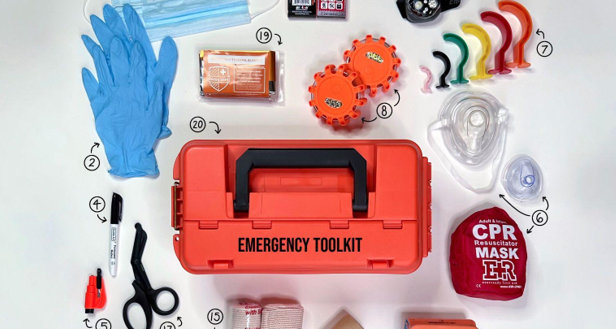
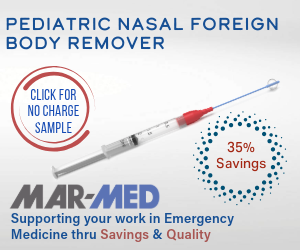
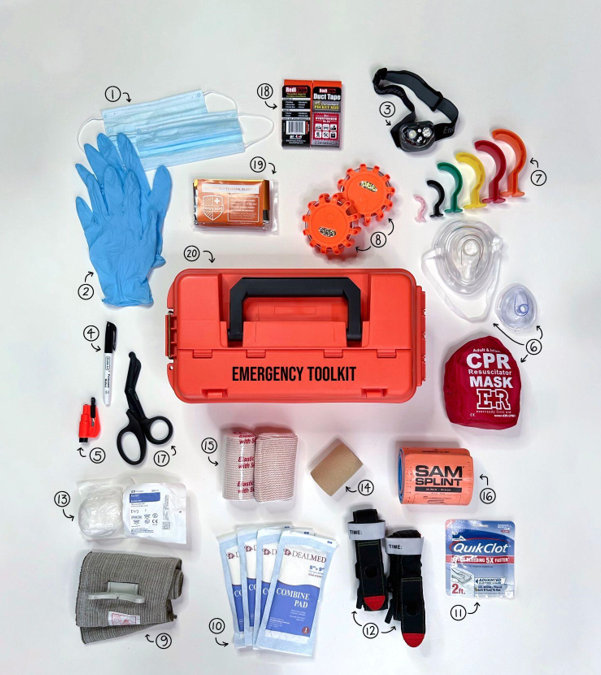
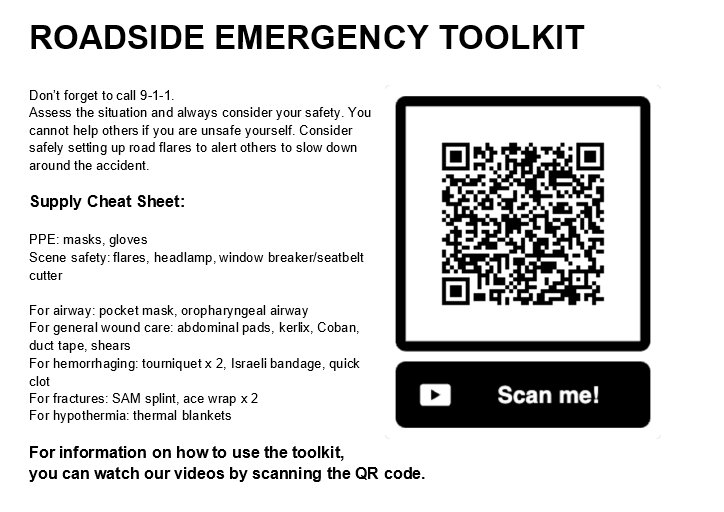
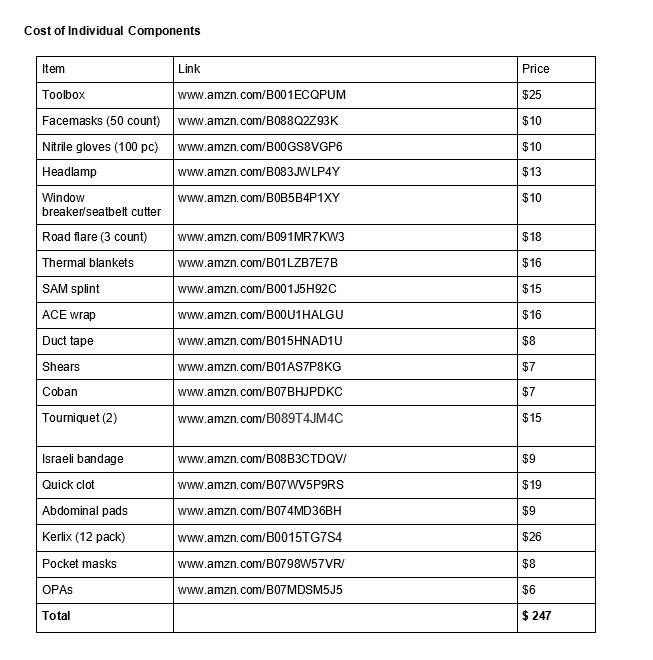
1 Comment
1. Very important to add a **HIGH VISABILITY reflective traffic vest** as YOUR safety ALWAYS comes FIRST! Scene safety is #1.
2. I would suggest to make it somewhat easy to access injuries that are covered or bandaged as the responding EMS providers will need to visualize the injuries.
4. I would also add the following:
*sterile 4×4’s and 1″medical tape for smaller wounds, instead of opening an abd for everything.
*pair of heavy duty work gloves to protect your hands if you must remove someone from a vehicle.
*antiseptic hand wipes or liquid for cleaning your hands/arms
*a ABC fire extinguisher for car fires *Do not inhale the fumes* CO2 is better but are huge tanks.
**Consider adding good stethoscope, BP cuffs (large adult, adult, child) and Pulse Ox and something to write on.
Next article on street EMS response, maybe consult a fellow EMS street Paramedic expert instead of only hospital docs and Dr Google.